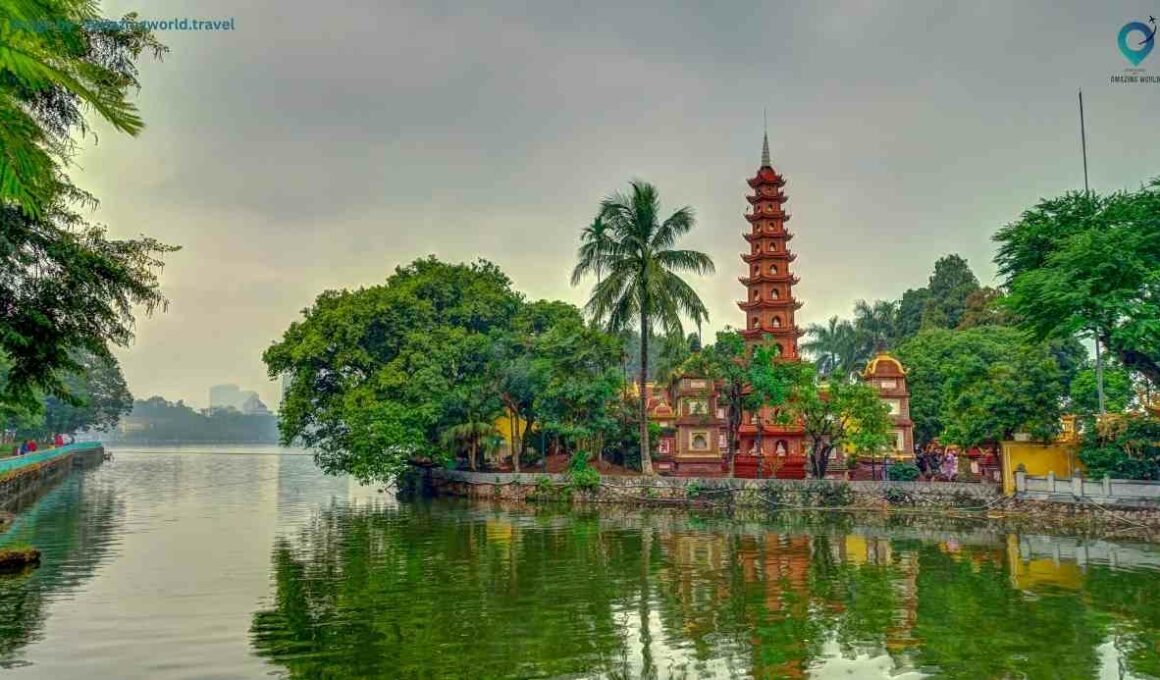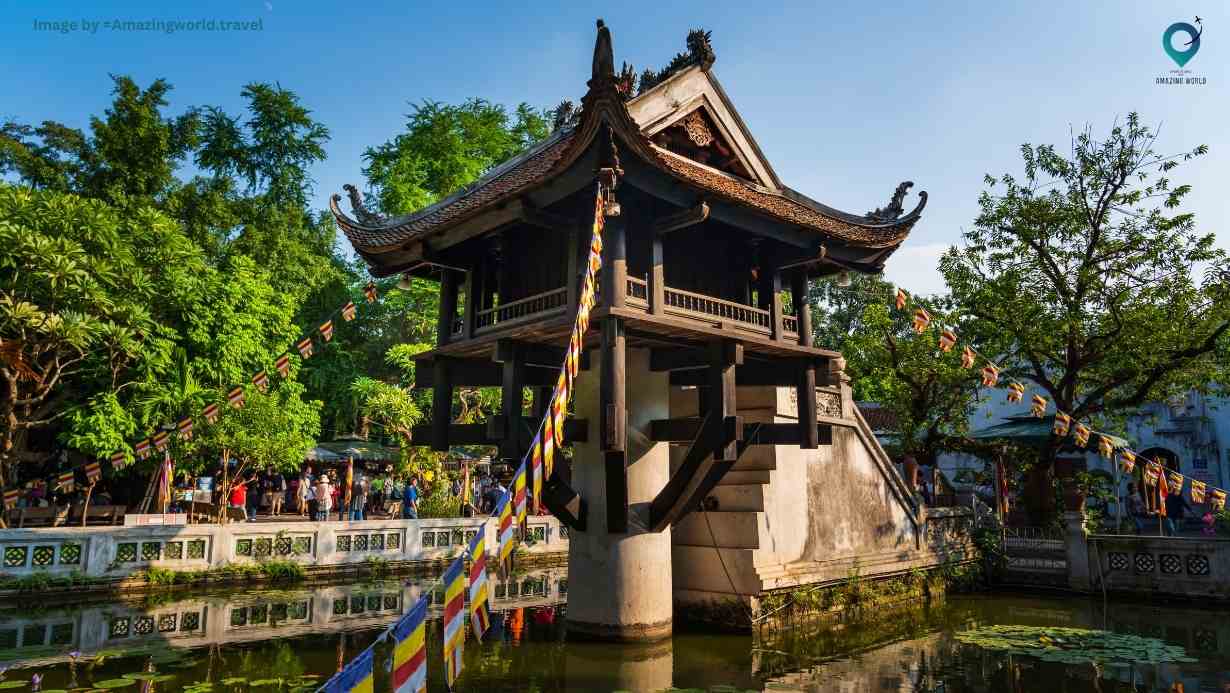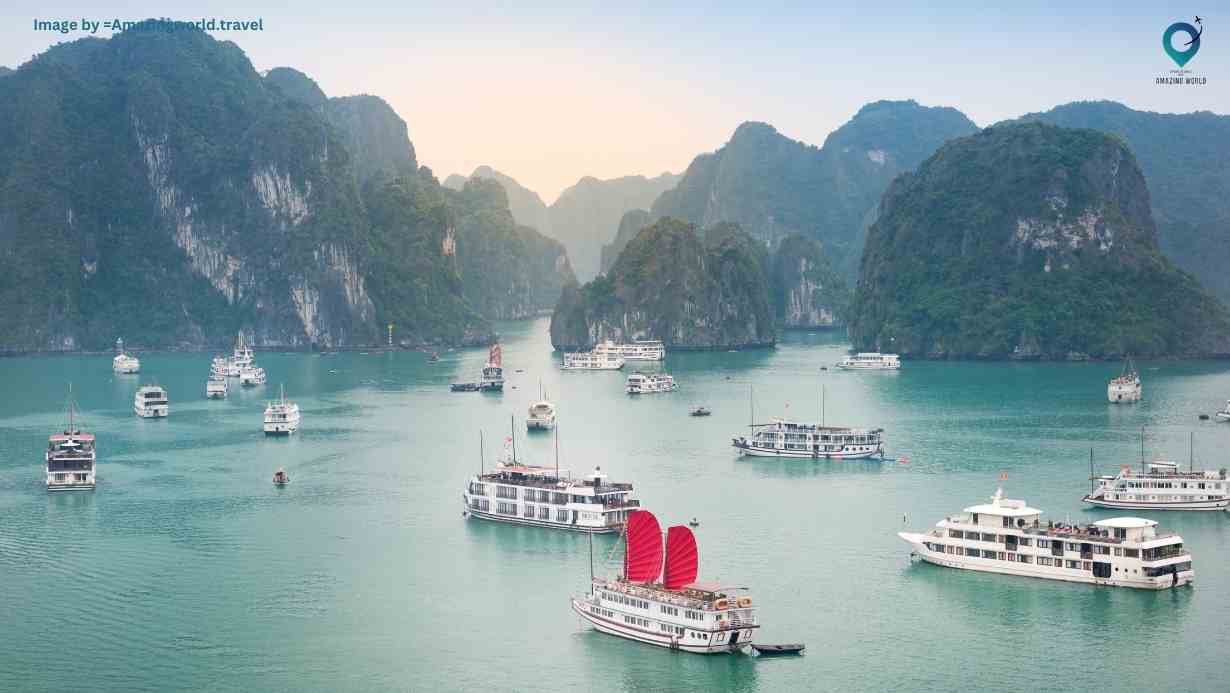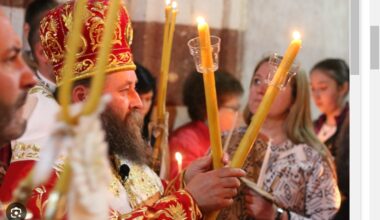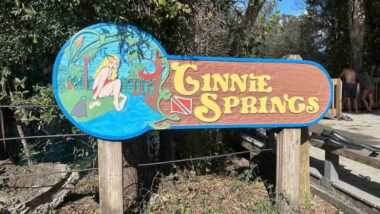The Best Times to Visit Vietnam: A Comprehensive Guide
Hello, My Dear Travel Fellow.
Are you eager to discover the enchanting landscapes and vibrant culture of Vietnam but wondering about the perfect time to embark on your journey? Exploring Vietnam’s breathtaking beauty is a captivating adventure that requires the right timing.
Delve into our comprehensive guide as we unveil the ideal seasons, cultural festivities, and diverse experiences awaiting your exploration in this captivating Southeast Asian gem.
Join us as we navigate the nuanced tapestry of Vietnam’s seasons and festivities, ensuring you make the most of your travel endeavors while uncovering the essence of this captivating country.
“If you are looking for the best hotel and flight deals for your next vacation, then we recommend booking your bundled flight and hotel through hotwire.com.“
About Vietnam: An Overview
Vietnam, nestled in Southeast Asia, is a captivating tapestry of diverse landscapes, rich culture, and historical significance. Boasting a long coastline, scenic mountain ranges, lush forests, and bustling cities, Vietnam offers an array of experiences for travelers seeking both natural beauty and cultural immersion.
This enchanting country, steeped in a vibrant history, showcases remnants of ancient civilizations alongside modern developments. From the bustling streets of Hanoi, the historic capital in the north, to the vibrant Ho Chi Minh City in the south, Vietnam blends tradition and modernity.
The country is renowned for its iconic landmarks, including the magnificent limestone pillars of Ha Long Bay, the terraced rice fields in Sa Pa, the ancient town of Hoi An with its well-preserved architecture, and the expansive Mekong Delta teeming with life.
Vietnam’s cultural heritage, shaped by indigenous traditions and influences from neighboring countries, is reflected in its diverse cuisine, colorful festivals, and traditional arts, including water puppetry and silk weaving. The Vietnamese people’s warmth and hospitality add to this beautiful nation’s allure.
Vietnam’s charm lies in its picturesque landscapes and its profound history, which echoes through its temples, pagodas, and historical sites. As travelers navigate this land, they encounter a mosaic of experiences, each contributing to the allure and uniqueness of Vietnam as a must-visit destination in Southeast Asia.
How to Visit Vietnam
- Entry Requirements and Visa:
- Check Vietnam’s visa requirements based on your nationality. Some countries may have visa-free access or visa-on-arrival options.
- Obtain a valid visa before arriving in Vietnam, if required, through the official channels or the Vietnamese embassy or consulate in your country.
- Transportation:
- Choose your mode of transportation based on convenience and preference. Vietnam has an extensive network of domestic flights, trains, buses, and ferries connecting major cities and regions.
- Internal flights are efficient for covering long distances quickly. Airlines such as Vietnam Airlines, VietJet Air, and Bamboo Airways operate domestic routes.
- Overnight trains are a scenic and comfortable way to travel between major cities like Hanoi, Da Nang, and Ho Chi Minh City.
- Local buses and private cars/taxis are available for shorter distances or exploring remote areas.
- Currency and Finances:
- Vietnam’s currency is the Vietnamese Dong (VND). Ensure you have local currency for transactions.
- Credit cards are accepted in larger establishments, but smaller shops and markets may prefer cash. ATMs are widely available in urban areas.
Month-by-month guide for traveling in Vietnam -The best time to visit
January
- Northern Vietnam: In January, Northern Vietnam experiences cool and dry weather, making it an excellent time for sightseeing in Hanoi, exploring the stunning Ha Long Bay, and indulging in trekking adventures in Sapa.
- Central Vietnam: This month offers pleasant temperatures in central regions like Hue and Da Nang, ideal for discovering historical landmarks and relaxing on beautiful beaches.
- Southern Vietnam: Warmer and dry weather prevails in the south, perfect for exploring Ho Chi Minh City and the captivating Phu Quoc Island.
Vietnam in January showcases a diverse climate across its regions, enabling travelers to enjoy a wide array of activities catering to various preferences.
February
- Northern Vietnam: Similar to January, February retains favorable weather conditions for outdoor activities such as trekking and cultural experiences in the north.
- Central Vietnam: Pleasant temperatures continue in central areas, making it an ideal time for beach visits to Da Nang and exploring the ancient town of Hoi An.
- Southern Vietnam: The southern regions maintain warm climates, great for coastal explorations and city tours.
February is a fantastic time to visit Vietnam, offering varied experiences across the country’s distinctive regions, from cultural immersion to beach getaways.
March
- Northern Vietnam: As spring arrives, March brings blossoming landscapes and ideal weather for outdoor adventures in Northern Vietnam. This period is perfect for exploring rural areas and ethnic minority villages.
- Central Vietnam: March continues to offer pleasant weather for sightseeing in Hue, exploring the imperial city, and enjoying pristine beaches in Da Nang and Hoi An.
- Southern Vietnam: The south remains warm and dry, facilitating visits to destinations like Ho Chi Minh City and the Mekong Delta.
March signifies the onset of spring in Vietnam, making it an opportune time for cultural exploration and outdoor activities throughout the country.
April
- Northern Vietnam: April witnesses the transformation of landscapes with blooming flowers and comfortable weather, ideal for trekking in Sapa or exploring rural areas around Hanoi.
- Central Vietnam: This month still offers favorable conditions for coastal activities in Da Nang and Hoi An. It’s a great time to enjoy beach outings and cultural excursions.
- Southern Vietnam: Southern regions continue to experience warm temperatures, providing fantastic opportunities for beach vacations in Phan Thiet and Phu Quoc.
April offers pleasant weather across Vietnam, allowing travelers to engage in a myriad of activities ranging from cultural immersion to leisurely beach days.
May
- Northern Vietnam: May brings warmer temperatures to the north, making it an excellent time for outdoor activities and exploring the scenic beauty of Ha Giang and Mai Chau.
- Central Vietnam: The beaches of Da Nang and Hoi An remain inviting, and historical sites in Hue are perfect to explore in this mild weather.
- Southern Vietnam: May signifies the onset of the rainy season in the south, yet it still offers enjoyable weather for travel and exploration, although occasional rain showers can be expected.
May presents a mix of weather conditions across Vietnam, offering diverse experiences, especially for outdoor enthusiasts and cultural explorers.
June
- Northern Vietnam: June marks the beginning of the rainy season in the north. Although rain showers increase, the landscapes remain lush and vibrant, perfect for exploring local culture and indoor attractions in cities like Hanoi.
- Central Vietnam: Central regions experience some rainfall in June, yet it’s a good time to visit for those who enjoy fewer crowds and wish to experience the area’s cultural heritage.
- Southern Vietnam: The south enters the rainy season with intermittent downpours. However, it still offers opportunities to explore urban areas and immerse in local life.
June brings the rainy season to Vietnam, providing a quieter travel period with lush landscapes and cultural experiences but requiring readiness for occasional showers.
July
- Northern Vietnam: July continues with the rainy season in the north, offering lush greenery and opportunities for indoor activities like museum visits and cultural explorations in Hanoi.
- Central Vietnam: Rainfall persists in central regions, but it’s still a suitable time for those seeking quieter travels and cultural experiences in Hue and Hoi An.
- Southern Vietnam: Southern areas experience increased rainfall, yet it doesn’t hinder urban explorations in Ho Chi Minh City or visits to the Mekong Delta.
July maintains the rainy season across Vietnam, making it a quieter travel period with occasional rains, perfect for cultural experiences and indoor explorations.
August
- Northern Vietnam: August continues with intermittent rains in the north, providing a quieter atmosphere for cultural explorations in Hanoi or venturing to regions like Mai Chau for trekking.
- Central Vietnam: Rainfall persists in August, yet it’s still suitable for cultural immersions in Hue or exploring Hoi An’s heritage sites amidst fewer crowds.
- Southern Vietnam: Southern areas encounter increased rainfall, but it doesn’t deter urban explorations in Ho Chi Minh City or day trips to the Mekong Delta.
August extends the rainy season across Vietnam, offering quieter travel moments amid occasional showers, ideal for cultural immersion and exploring historical sites with fewer crowds.
September
- Northern Vietnam: September begins transitioning towards autumn, offering clearing skies and beautiful landscapes. It’s an excellent time for trekking in Sapa or exploring the cultural facets of Hanoi.
- Central Vietnam: Rainfall reduces gradually, making it an opportune time for historical explorations in Hue or leisurely strolls in Hoi An’s ancient town.
- Southern Vietnam: While rain persists, September allows for urban explorations in Ho Chi Minh City and nearby excursions to the Mekong Delta.
September marks the transition from the rainy season to clearer skies in Vietnam, making it an ideal time for outdoor activities and cultural explorations amidst a less rainy environment.
October
- Northern Vietnam: October presents comfortable temperatures and clearer skies, making it an ideal time for trekking in the northern mountains or exploring Hanoi’s cultural heritage.
- Central Vietnam: Central regions experience reduced rainfall, offering perfect conditions for historical visits in Hue and leisurely exploration in Hoi An.
- Southern Vietnam: Southern areas also see decreased rainfall, allowing for urban explorations in Ho Chi Minh City or excursions to the Mekong Delta.
October welcomes clear skies and pleasant temperatures across Vietnam, providing ideal conditions for outdoor activities, cultural explorations, and historical visits.
November
- Northern Vietnam: November brings cooler temperatures to the north, particularly in Sapa and the mountainous regions, making it an excellent time for trekking amidst stunning landscapes. Hanoi’s weather remains pleasant, ideal for city explorations and cultural experiences.
- Central Vietnam: Central regions experience mild and dry weather, offering optimal conditions for visits to Hue’s historical sites and further exploration of Hoi An.
- Southern Vietnam: November continues with the dry season in the south, making it an ideal time for exploring Ho Chi Minh City, the Mekong Delta, and coastal areas like Phu Quoc Island.
November marks the beginning of the dry season in many parts of Vietnam, making it an attractive time for outdoor activities, city tours, and cultural experiences across the country.
December
- Northern Vietnam: December brings cold weather to the northern regions like Sapa, creating an enchanting landscape with occasional fog and mist. Hanoi’s temperatures are cooler but still comfortable for city explorations and cultural visits.
- Central Vietnam: Central areas experience mild and dry weather, perfect for sightseeing in Hue and exploring Hoi An’s ancient town during the festive season.
- Southern Vietnam: December remains dry and warm in the south, inviting travelers to enjoy Ho Chi Minh City’s bustling atmosphere and explore the coastal regions.
December offers diverse experiences across Vietnam, from the magical fog-clad mountains in the north to the vibrant urban scenes in the south, making it a popular time for travel.
Each month brings unique weather conditions and travel opportunities to different parts of Vietnam, catering to various preferences and activities for travelers exploring this beautiful country.
Experiencing Vietnamese Festivals
Concept of Festivals in Vietnamese Culture: Festivals hold immense significance in Vietnamese culture, serving as vibrant celebrations deeply rooted in history, spirituality, and community cohesion. These events are often characterized by colorful displays, age-old customs, lively performances, and the honoring of revered traditions.
Major Festivals in Vietnam:
- Tet (Lunar New Year): Tet Nguyen Dan, or Tet as commonly known, is the most significant and widely celebrated festival in Vietnam. Falling on the first day of the lunar calendar (usually in late January or early February), Tet marks the arrival of spring and symbolizes renewal, family reunions, and paying respects to ancestors. Homes are adorned with vibrant decorations, families gather for sumptuous feasts, and streets come alive with fireworks and traditional dragon dances.
- Mid-Autumn Festival (Tet Trung Thu): Celebrated on the 15th day of the eighth lunar month, usually in September or October, the Mid-Autumn Festival is a joyous occasion centered around children. Families come together to appreciate the full moon, share delectable mooncakes, and carry brightly lit lanterns in captivating processions. Traditional lion dances and storytelling performances add to the festivities.
- Hue Festival: Held in the ancient city of Hue every two years, the Hue Festival is a grand cultural extravaganza that showcases Vietnam’s artistic heritage. Spanning several days, this event features mesmerizing parades, traditional music and dance performances, captivating exhibitions, and historical reenactments. It offers a glimpse into the country’s diverse cultural tapestry.
Unique Experience:
- Hoi An Lantern Festival: Taking place on the 14th day of each lunar month in the picturesque town of Hoi An, the Lantern Festival (or Full Moon Festival) is a sight to behold. The ancient streets are aglow with thousands of colorful silk lanterns, creating a magical ambiance. Visitors can release candle-lit paper lanterns onto the river, partake in cultural activities, and enjoy traditional music performances.
These festivals provide an immersive experience into Vietnam’s cultural depth, offering visitors an opportunity to partake in age-old traditions, witness captivating performances, and revel in the country’s vibrant spirit of celebration and community.
Engaging in Diverse Activities:
- Hiking and Trekking:
- Sapa: Explore the scenic landscapes of Sapa with trekking tours to ethnic minority villages amidst terraced rice fields.
- Ha Giang Loop: Embark on a motorbike journey through Ha Giang’s rugged landscapes and witness stunning vistas.
- Swimming and Snorkeling:
- Phu Quoc Island: Enjoy pristine beaches and clear waters perfect for snorkeling and diving at sites like An Thoi Archipelago.
- Nha Trang: Dive into the azure waters of Nha Trang’s bays, home to diverse marine life and coral reefs.
- Cycling:
- Hoi An Countryside: Cycle through the peaceful countryside and rice paddies of Hoi An, exploring traditional villages and rural life.
- Mekong Delta: Pedal along the Mekong Delta’s paths, witnessing its lush landscapes and floating markets.
- Motorbiking:
- Ho Chi Minh Trail: Ride along the historic Ho Chi Minh Trail, passing through picturesque landscapes and historical sites.
- Coastal Roads: Explore Vietnam’s coastal roads, from Hai Van Pass to the coastal stretch between Hue and Hoi An.
- Cooking Classes: Hanoi and Hoi An: Participate in immersive cooking classes to learn the art of Vietnamese cuisine, from local markets to hands-on cooking sessions.
- Yoga and Meditation: Dalat and Ninh Binh: Engage in yoga retreats amidst the serene landscapes of Dalat or Ninh Binh’s limestone karsts, fostering relaxation and inner peace.
Popular Attractions in Vietnam
- Ha Long Bay:
- Description: Recognized as a UNESCO World Heritage Site, Ha Long Bay’s emerald waters are adorned with towering limestone karsts and isles, creating a breathtaking seascape.
- Highlights: Cruises, kayaking, exploring caves (like Sung Sot Cave), and overnight stays on traditional junks.
- Hoi An Ancient Town:
- Description: A charming UNESCO-listed town characterized by its well-preserved ancient architecture, lantern-lit streets, and vibrant markets.
- Highlights: Japanese Covered Bridge, Assembly Halls, tailor shops, lantern-making workshops, and its atmospheric ambiance at night.
- Hue Imperial City:
- Description: A historical city showcasing Vietnam’s royal past, featuring the UNESCO-protected Imperial Citadel, palaces, and ancient tombs.
- Highlights: The Citadel, Thien Mu Pagoda, royal tombs like Khai Dinh Tomb and Minh Mang Tomb, and traditional boat rides along the Perfume River.
- Sa Pa Terraced Fields:
- Description: Sa Pa is renowned for its cascading rice terraces nestled amidst majestic mountains and ethnic minority villages.
- Highlights: Trekking through rice terraces, interacting with local tribes like H’mong and Red Dao, and enjoying panoramic views.
- Phong Nha-Ke Bang National Park:
- Description: Home to stunning limestone caves and one of the largest cave systems in the world, including Son Doong Cave.
- Highlights: Cave explorations (Phong Nha Cave, Paradise Cave), jungle treks, and scenic boat rides.
- Ho Chi Minh City (Saigon):
- Description: A bustling metropolis with a blend of modern skyscrapers, historical landmarks, and vibrant street life.
- Highlights: War Remnants Museum, Notre Dame Cathedral, Cu Chi Tunnels, Ben Thanh Market, and culinary experiences.
- Nha Trang:
- Description: A coastal city famous for its idyllic beaches, vibrant nightlife, and opportunities for water sports and relaxation.
- Highlights: Long Son Pagoda, Po Nagar Cham Towers, Hon Mun Island for snorkeling, and Vinpearl Land amusement park.
These attractions represent just a fraction of Vietnam’s rich tapestry of culture, history, natural beauty, and diverse experiences awaiting travelers. Each destination offers a unique glimpse into Vietnam’s multifaceted allure.
Trip Advice and Travel Guides for Exploring Vietnam
| Source | Details |
| Transportation | – Internal Travel: Consider trains, domestic flights, and buses.
– Local Transport: Taxis, ride-sharing apps, cyclos, motorbike taxis. |
| Accommodation | – Diverse choices: Budget hostels to luxury hotels and resorts.
– Advance booking advice, especially during peak seasons. |
| Cultural Sensitivity | – Respect local customs and etiquette.
– Basic knowledge of Vietnamese phrases or use translation apps. |
| Safety and Health | – Health precautions: Vaccinations, water, and food safety.
– Safety measures against petty crimes, travel insurance. |
| Currency and Money Matters | – Vietnamese dong (VND) as local currency.
– Exchange money at authorized outlets or use ATMs. |
| Weather Consideration | – Varied climates in different regions.
– Plan activities based on specific regional weather patterns. |
| Local Cuisine | – Try diverse street food offerings while ensuring hygiene.
– Must-try dishes include pho, banh mi, and fresh seafood. |
| Guided Tours and Local Guides | – Consider hiring local guides for deeper insights.
– Organized tours for popular destinations or experiences. |
Conclusion
Vietnam stands as an enchanting tapestry of cultural heritage, natural beauty, and vibrant experiences. Its diverse landscapes, from the bustling cities to the serene countryside, offer travelers a wide array of adventures and discoveries. From the majestic karst formations of Ha Long Bay to the ancient allure of Hoi An’s lantern-lit streets, Vietnam is a treasure trove waiting to be explored.
As you plan your visit to Vietnam, consider the time of year that aligns with your preferences, whether it’s chasing the sun along the southern coast or embracing the cooler climate in the north. Remember to immerse yourself in the rich traditions and warm hospitality of the locals. Taste the exquisite flavors of Vietnamese cuisine, embark on thrilling adventures, and relish moments of tranquility amidst breathtaking landscapes.
Keep in mind the local customs, practice cultural sensitivity, and engage with the local community. Whether you wander through ancient temples or cruise along the Mekong Delta, Vietnam invites you to create unforgettable memories and stories to cherish for a lifetime. With its captivating beauty and diverse experiences, Vietnam undoubtedly remains an inviting destination for every traveler seeking adventure, culture, and genuine hospitality.
How much did you like Our detailed Best Times to Visit Vietnam: Your Ultimate Guide? Review Also, please share these Blogs with your friends on social media.
Recommended
- Best Countries to Visit as Solo Travelers
- 25 Best Countries to Visit as Solo Travelers in 2023
- Best Places In Asia for Solo Travelers
- Best Destinations in Africa for Solo Travelers
FAQs about the Best Times to Visit Vietnam
What is the weather like during different months in Vietnam?
Vietnam's weather varies significantly from region to region and month to month. In the north, the weather is cooler and experiences distinct seasons, with hot summers and cold winters. Central Vietnam sees two distinct seasons - a wet and a dry season. Southern Vietnam tends to be warm and humid throughout the year with occasional monsoons.
Are there specific festivals or events during certain times of the year in Vietnam?
Yes, Vietnam hosts numerous festivals and events throughout the year. Some notable festivals include:
Tet (Lunar New Year): Celebrated around January or February, Tet is the most important festival in Vietnam.
Mid-Autumn Festival: Usually in September, it's a celebration for children with lanterns and mooncakes.
Hue Festival: Held every two years, this event showcases cultural performances, music, and art in Hue.
How does the weather vary in northern vs. southern Vietnam?
Northern Vietnam experiences four distinct seasons, with a cold winter from November to February and a hot summer from June to August. Southern Vietnam has a tropical climate with high humidity, remaining warm year-round. The south sees two main seasons - dry and wet.
Which weather conditions in Vietnam are best for outdoor activities?
The best time for outdoor activities in Vietnam varies by region. For hiking and trekking in the north, the spring (March to April) and autumn (September to November) offer pleasant weather and clear skies. In the south, the dry season (December to April) is ideal for beach activities and exploring the Mekong Delta.

Meet David Hoper, a passionate travel Blog writer with 7+ years of experience in travel content. Through his exemplary storytelling and engaging narratives, he shares his experiences and brings destinations to life. With a keen eye for detail and a love for exploration, he has cultivated a diverse portfolio of travel blogs that inspire and inform readers worldwide.
